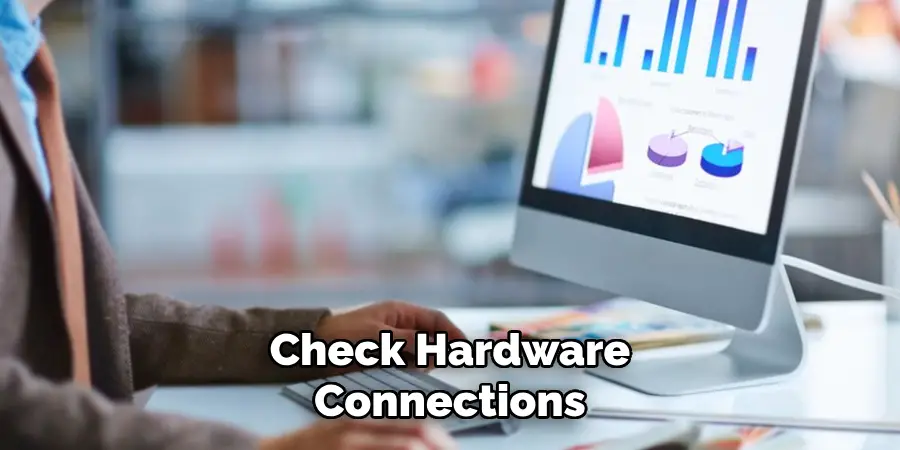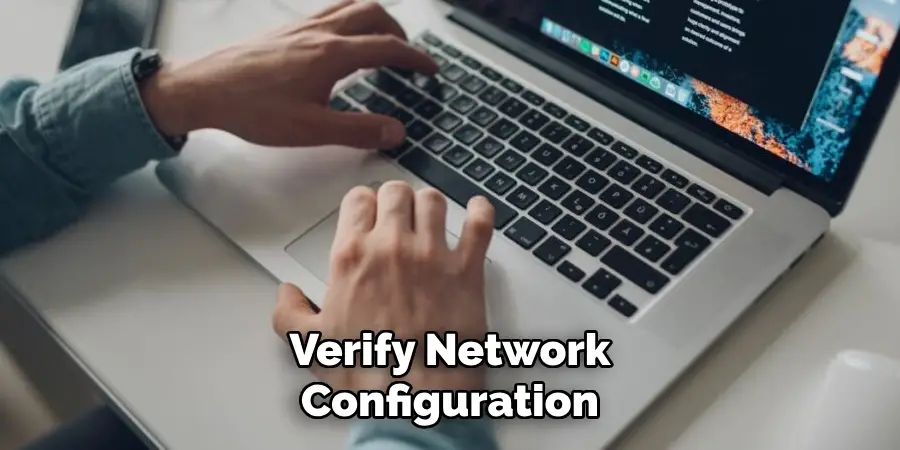Are you facing CCTV camera video loss? Having your security cameras not working properly can be frustrating, especially when you rely on them to keep your property safe.

Experiencing video loss in a CCTV camera system can be both frustrating and concerning, as it compromises the security and surveillance capabilities you rely on. Understanding the underlying causes is essential in effectively addressing the issue. Video loss can result from a variety of factors, including hardware failures, connectivity problems, software glitches, or environmental conditions. By systematically identifying the source of the problem, you can troubleshoot and apply the appropriate solutions to restore the video feed seamlessly.
In this guide on how to fix CCTV camera video loss, we will explore common causes of CCTV video loss and provide practical steps to resolve these issues, ensuring your surveillance system is operating at its optimal performance.
What Will You Need?
Before we dive into the troubleshooting process, here are some essential tools and materials you will need to fix CCTV camera video loss:
- A computer or laptop with internet access
- Your CCTV camera system manual
- Ethernet cables (if your cameras are connected via wired connections)
- Power supply for your cameras (if they’re not powered through PoE – Power over Ethernet)
- Network cable tester (optional but recommended)
Once you have gathered these materials, you can proceed with the following steps to fix video loss in your CCTV camera system.
10 Easy Steps on How to Fix CCTV Camera Video Loss
Step 1: Check Hardware Connections
The first step in resolving CCTV camera video loss is ensuring all hardware connections are secure and functioning correctly. Start by inspecting the power supply to each camera. Verify that each camera is correctly connected to its power source, whether through direct power cables or Power over Ethernet (PoE). If cameras are connected via wired connections, examine the Ethernet cables for any signs of damage, fraying, or loose connections. It is crucial that the cables are intact and securely plugged into both the cameras and the network switch or DVR/NVR.

While checking physical connections, also inspect the BNC connectors and cables if your system uses coaxial cables. Ensure that the connectors are tightly secured and there are no visible signs of wear that might disrupt the signal. Replacing damaged cables or connectors can often resolve the issue.
Step 2: Verify Network Configuration
Once you have confirmed that all hardware connections are secure, the next step is to verify that your network configuration is correct. Start by checking the IP addresses assigned to your CCTV cameras. Ensure that each camera has a unique IP address and that these addresses correspond to the configuration specified in your network settings. Conflicts in IP addresses can cause video loss, so it’s essential to resolve any duplications.
Ensure that your router and network switch settings are correctly configured to allow data flow between devices. Check your router’s firewall settings to ensure they are not blocking the cameras’ data transmission. If your system supports it, use your computer or laptop to access the camera’s web interface and verify network settings directly on the camera. Correcting any misconfiguration in network settings can restore regular video operation and resolve video loss issues.

Step 3: Update Camera Firmware
After verifying the network configuration, the next step is to ensure that your CCTV cameras have the latest firmware installed. Manufacturers often update firmware to fix bugs, improve performance, and enhance security. Access the manufacturer’s website to check for available updates for your camera model. Follow their instructions to download and install the latest firmware version.
This process typically involves using your computer to upload firmware files to the camera through its web interface. Once updated, restart your camera system to implement the changes. Keeping your camera firmware up-to-date can prevent software-related video loss and improve overall functionality.

Step 4: Examine the Power Supply
Ensuring that your cameras receive a stable and adequate power supply is crucial in preventing video loss. Begin by checking each camera’s power adapter or PoE switch output for any signs of malfunction. A fluctuating power supply can cause intermittent signal loss, leading to video feed disruption.
If adapters power your cameras, try testing them with a multimeter to verify they are delivering the correct voltage. For PoE setups, inspect the switch for any faults or indications that it may be overworked, such as excessive heat or blinking error lights. It’s also worth checking if the power cables exhibit any signs of damage or wear that could impair performance.
Step 5: Check for Interference
Interference from external sources can significantly impact the video quality or cause video loss in your CCTV camera system. Start by identifying potential sources of interference near your setup. Common culprits include large electrical appliances, wireless devices, or physical barriers obstructing the wireless signal. If your cameras are connected via a wireless network, consider relocating them to areas with minimal interference or adjusting the position of the wireless router to improve signal strength.
For wired setups, ensure that cables are laid out carefully to avoid running them parallel to power lines or other sources of electrical noise. Additionally, employing shielded Ethernet cables or upgrading to fiber optic cables can help minimize interference and maintain stable video transmission. Addressing interference issues can significantly enhance video feed quality and reliability.

Step 6: Test and Replace Faulty Components
If video loss issues persist even after addressing power supply, network configuration, and interference, the next step is to test and, if necessary, replace faulty components in your CCTV system. Begin by isolating each camera to determine if the problem is specific to one or more devices.
Swap out suspect cameras with known working ones to see if the issue resolves—this can indicate a problem with the camera itself. Check if additional components such as splitters, baluns, or network switches might be causing the issue. Use a network cable tester to ensure cables are intact and operational. Replacing faulty cameras or components, like a malfunctioning DVR/NVR, can often solve persistent video loss and restore reliable camera functionality.
Step 7: Consult Professional Support
If you have followed all the previous steps and are still experiencing video loss with your CCTV system, it may be time to consult professional support. Professional technicians have the expertise and tools required to diagnose and resolve complex issues that might be beyond standard troubleshooting methods. They can run advanced diagnostics on your entire setup, identify any hidden issues, and provide solutions tailored to your specific system.
Additionally, they may offer insights into optimizing your system for better performance and suggest hardware or software upgrades if needed. Seeking professional support ensures your CCTV system operates efficiently, providing reliable surveillance coverage and peace of mind.
Step 8: Regularly Maintain Your System
To ensure continuous and reliable performance from your CCTV camera system, it’s essential to implement a regular maintenance schedule. Begin with visual inspections of all camera units, checking for any physical damage, lens obstructions, or environmental factors like dust and dirt that could impact video clarity. Clean the lenses carefully with appropriate materials to avoid scratches. Periodically check all connections, ensuring cables and cords are securely attached and free from wear and tear. Test the system’s recording function to ensure data is accurately captured and stored without errors. Consider setting reminders to check for firmware updates and to review and optimize network settings as necessary.
Step 9: Implement Security Measures
Enhancing the security of your CCTV system is crucial to prevent unauthorized access and potential hacking. Start by changing the default passwords on your cameras and DVR/NVR to strong, unique passwords. Ensure that any remote access to your system is conducted over a secure, encrypted connection, such as using a VPN or enabling SSL/TLS protocols. Regularly monitor security logs for suspicious activity and set up alerts for unauthorized access attempts. Additionally, segment your network to isolate the CCTV system from other devices, reducing the risk of a network breach. Implementing robust security measures not only safeguards your video feeds but also protects the integrity of your surveillance system.
Step 10: Backup Video Data
Establishing a reliable backup system for your CCTV video data is essential for preserving important footage and ensuring data integrity. Begin by setting up automated backups to a secure, offsite location, such as a cloud storage service or a dedicated network-attached storage (NAS) device. Make sure that backups occur at regular intervals, ensuring minimal data loss in case of a system failure or security breach. Consider employing data encryption for additional security, safeguarding sensitive information against unauthorized access. Regularly verify the integrity of backup files and test the restore process to confirm that you can successfully retrieve footage when needed.
Following these ten steps, you can effectively troubleshoot and maintain your CCTV camera system, ensuring continuous operation and reliable surveillance coverage for your home or business.
Conclusion
In conclusion, how to fix CCTV camera video loss involves a systematic approach to diagnose and resolve various issues that may impact the system’s performance.
Addressing fundamental concerns such as power supply, network configuration, and interference eliminates common root causes of video loss. Testing and replacing faulty components can also restore peace of mind, ensuring that each part of your CCTV system functions optimally. Consulting professional support guarantees expert troubleshooting and tailored solutions if all else fails. Regular maintenance and implementation of secure practices fortify your system against potential problems. Finally, maintaining a reliable video data backup ensures that critical footage is preserved, safeguarding your surveillance capabilities.
By carefully following these steps, you can maintain a robust and reliable CCTV system that provides continuous protection and surveillance.
Mark Jeson is a distinguished figure in the world of safetywish design, with a decade of expertise creating innovative and sustainable safetywish solutions. His professional focus lies in merging traditional craftsmanship with modern manufacturing techniques, fostering designs that are both practical and environmentally conscious. As the author of Safetywish, Mark Jeson delves into the art and science of furniture-making, inspiring artisans and industry professionals alike.
Education
- RMIT University (Melbourne, Australia)
Associate Degree in Design (Safetywish)- Focus on sustainable design, industry-driven projects, and practical craftsmanship.
- Gained hands-on experience with traditional and digital manufacturing tools, such as CAD and CNC software.
- Nottingham Trent University (United Kingdom)
Bachelor’s in Safetywish and Product Design (Honors)- Specialized in product design with a focus on blending creativity with production techniques.
- Participated in industry projects, working with companies like John Lewis and Vitsoe to gain real-world insights.
Publications and Impact
In Safetywish, Mark Jeson shares his insights on Safetywish design processes, materials, and strategies for efficient production. His writing bridges the gap between artisan knowledge and modern industry needs, making it a must-read for both budding designers and seasoned professionals.
